FLIGHT FABLE
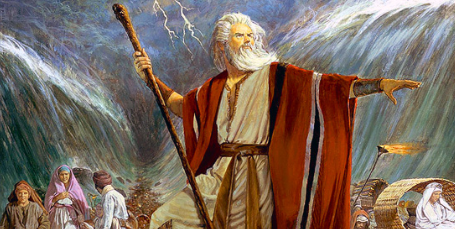
GEOGRAPHY BUT NO ARCHAEOLOGY
AND THE GEOGRAPHY IS WRONG.
Although the Exodus story appears to demonstrate a “good knowledge of the geography and natural conditions of the eastern Delta, the Sinai peninsula, the Negev and Transjordan,” archaeologists “cannot provide any clues to the Exodus as any such event that in fact happened.”
1 Archaeologists cannot identify the important mountain “Mount Sinai.”
2 They cannot identify many other place-names in the story. Never were any remains from this period found anywhere in the Sinai region.
3 They especially cannot identify the oasis of Kadeshbarnea, which plays such an important role in the story.
4. They concede that the Philistines had not occupied the North coast until centuries later. During the time period of Moses the area was occupied by Egyptian military outposts as is documented in the Library of Alexandria and other regional writings, and by archaeological digs in the north coastal areas.
THE ROUTE OF THE EXODUS
There are three major routes through the Sinai Peninsula:
1. Along the coast at the north, as a continuation of the “Horus Way,” which becomes the “Way of the Philistines”;
2. The middle of the peninsula, the “Way of Shur”; and
3. The longer Egypt-Arabia route or “Way of the Wilderness,” which cuts diagonally south, to the “King’s Highway.” There is also the south coastal route, which is closer to what the Israelites traditionally are purported to have taken, according to the ambiguous biblical route tale.
1 THE NORTH – THERE WERE EGYPTIAN WAYSTATIONS
Along the northern “Horus Road” route, there were more than 20 fortified Egyptian way-stations; hence, fleeing slaves would not escape via that path. The Exodus fraud writers did not know the prior history of the area. The Egyptian way-stations were not in use centuries later, the time period of the writings and in which there was settlements of the Philistines.

GOD DIDN’T KNOW!
“God” was concerned not with the Egyptians along the route — but with the Philistines, an ethnicity who did not exist yet in Canaan at the time period of Moses’s life. The Philistines were present at the time of the Babylonian exile – which evidences the time period in which the Exodus fable was written, 500 to 700 years after the Moses time period.
17 When Pharaoh let the people go, God did not lead them on the road through the Philistine country, though that was shorter. For God said, “If they face war, they might change their minds and return to Egypt.” Exodus 13:17
Evidently the con writers thought they could impersonate God and get away with it! (They didn’t know the prior history).
The Isrealites chose not to take the short routes across the desert. Instead the Israelites wandered about aimlessly having dramatic adventures that could easily have been compressed to a few years at most, if their Yahweh were truly all powerful. The whole event has the feel of a fictional drama, the sort we enjoy when we watch movies in our living rooms on our large flat screens.
Certain researchers have attempted to address various problems in this fairy tale by tracing the Exodus route along the southern coast of the Sinai Peninsula, placing Mt. Sinai in Arabia. However, the Bible itself indicates that Mt. Sinai was not in Arabia/Midian (About Mt. Sinai click here)
This is certainly not “God’s inerrant Word.” This is not “history” of a biblical event. It is a fictional miracle-Super Hero story presented as a fraud of History. It was written to make the Isrealites believe that they are God’s special people above all other people.
If one is endeavoring to be scientific, one needs to question whether or not this tall tale truly took place in history before blindly believing first that it had occurred, and then trying to find the “correct” route or any other rationalizations.
3 SOUTH – DESERT ROUTE
“God” led them to take the desert route (the Israelites were attempting to avoid the non-existing Philistines — Exodus 13:17 above)
ABOUT THE PHILISTINES CLICK HERE
ABOUT GREEKS TO CANAANITES CLICK HERE
ABOUT PITHOM AND PI-RAMESSES CLICK HERE
ABOUT PSUSENNES I AND TANIS CLICK HERE
ABOUT ON/HELIOPOLIS CLICK HERE
PILLARS OF CLOUD AND FIRE
In the Exodus flight story, there is the “miracle” of the pillars of cloud and fire accompanying and leading the Israelites through the desert (Exodus verse below). If the Almighty God can do all that, why did he not just instantly transport the Israelites into the Promised Land and spare us all the drama, suffering and bloodshed?
21 By day the Lord went ahead of them in a pillar of cloud to guide them on their way and by night in a pillar of fire to give them light, so that they could travel by day or night. Exod 13:21
Also, one would have thought that God could come up with better technology than fire to light the night, perhaps a giant halogen spotlight, but such is the view from the mind of a human writing thousands of years ago, without knowledge of modern technology.
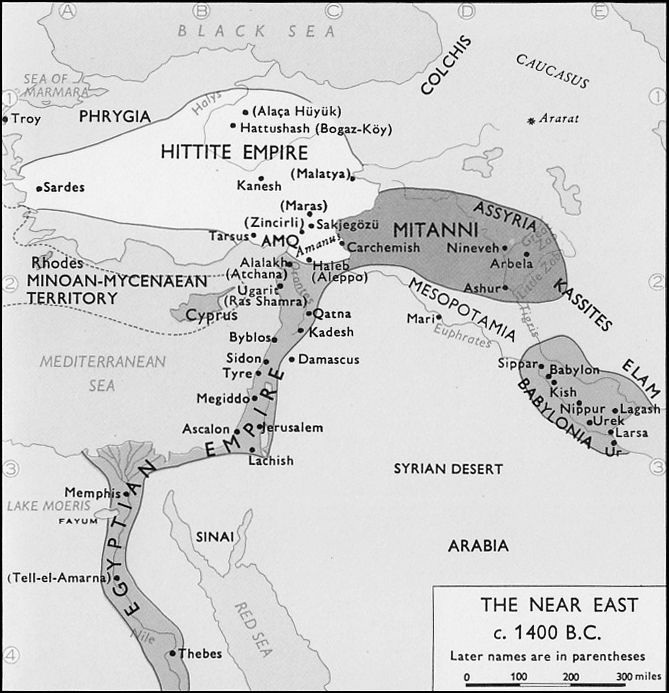
Yahweh’s pillar of cloud. Bible card by Providence Lithograph Company, c. 1896–1913
BACCHUS
Bacchus and his army enjoyed the light of the Sun, during the night time, and Moses and his army enjoyed the light of “a pillar of fire, by night.”
PARTING THE RED SEA?
10 And when Pharaoh drew near, the children of Israel lifted their eyes, and behold, the Egyptians marched after them. So they were very afraid, and the children of Israel cried out to the Lord Exodus 14:10
15 And the Lord said to Moses, “Why do you cry to Me? Tell the children of Israel to go forward. 16 But lift up your rod, and stretch out your hand over the sea and divide it. And the children of Israel shall go on dry ground through the midst of the sea. 17 Exodus 14:16
TYPICAL MYTH
The story of Moses escaping into the waters, away from a bad pursuing villain who is then drowned, is the typical archetypal Super-Hero tale exemplified in the myths of the sun gods or solar heroes overcoming the “prince of darkness,” or night/cloudy/stormy sky, conceived as a “watery abyss” or serpent/dragon that swallows up the light and goodness before being defeated.
Also the magical wand is seen in many myths.
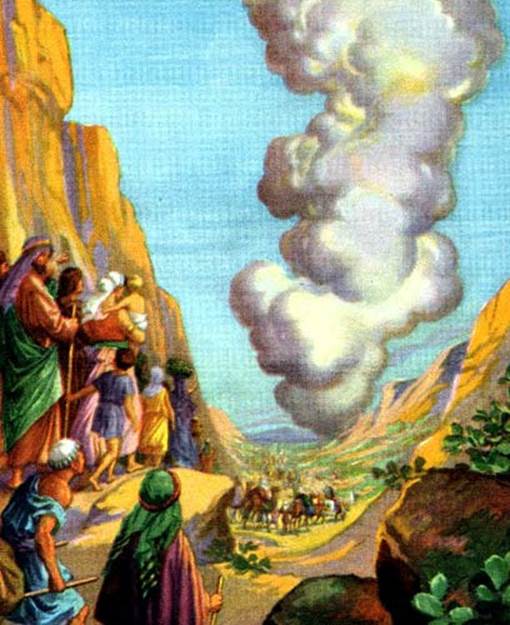
PARTING THE “SEA”
At Exodus 14, we read about the famous supernatural and dramatic parting of the Red Sea, during which time Moses controls the waters with the stretching out of his magical rod. This is the same rod remember, that turned into a snake and ate the other snake rods of the “bad-guy” Egyptian priests. The educational level of the people at that time was obviously at the pre-school level.
While blindly accepting the supernatural explanation of the wind parting the sea, biblical believers attempt to explain the Red Sea crossing naturalistically by placing it in the shallow “Sea of Reeds,” a shallower, swampy area to the north. In this naturalistic explanation, a wind conveniently reduces the water, allowing passage to the Israelites and all their animals and wagons laden with a mass of booty, tents, weapons, possessions, people, and with horses pulling and animals following. The fact that the lighter chariots of the Egyptians were stuck in the exposed mud muck and not the isrealites is just another fantastical miracle we are expected to believe, along with the wall of water rushing in to fill the void and drowning all the Egyptian army bad-guys.
22 and the Israelites went through the sea on dry ground, with a wall of water on their right and on their left. Exodus 14:22
people were in the carts
tents were in the carts
weapons were in the carts
booty were in the carts
possessions were in the carts
horses were in front pulling, cattle was at the rear
SEA OF REEDS INSTEAD?
None of the Exodus routes actually needs to cross the Red Sea. So in the exodus story the Israelites must go out of their way to pass through the sea waters on dry land. To explain this strange situation, some researchers have suggested that the Israelites actually crossed the Sea of Reeds and that the Hebrew term thus probably refers to a “sweet-water lake.”
The theory goes that the original Hebrew refers not to the “Red Sea” but to the “Reed Sea,” ים סוף Yam Suph in the Hebrew, the first word meaning “sea,” while the latter, suph or cuwph, is defined as: “1) reed, rush, water plant; a) rushes; b) sea of rushes.”248 The word “Yam” is also the name of the Semitic god of the sea, Yamm, equivalent to Poseidon and Neptune in the Greek and Roman mythologies, respectively.
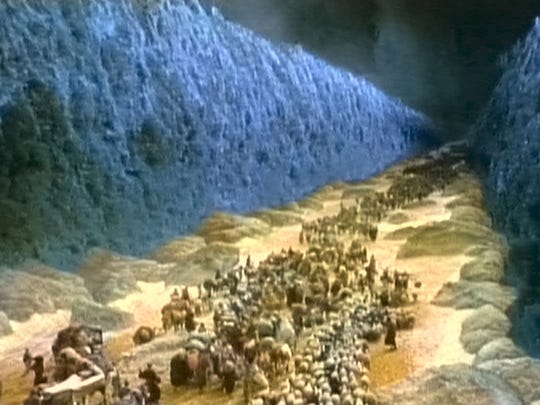
Fig. 26. Israel’s escape through the Red Sea. Bible card by Providence Lithograph, 1907
This idea of the “Reed Sea” has been rebutted, by scholars such as Batto, who claims that the “whole Reed Sea hypothesis is nothing more than a figment of scholarly imagination.” Russell prefers the “hybrid form ‘Re(e)d’ as a way to acknowledge the complexity of deciding between ‘Reed Sea’/‘Sea of Reeds’ and the traditional ‘Red Sea.’”
Despite the many convoluted and contorted efforts at explaining there is no solid scientific evidence of such a magical event in history. Nor is any other writings regarding this “miracle” from nearby regions including Egypt. However in other prior myths there can be found supernatural water control and crossings from other cultures in the surrounding regions.

PARTING AND CROSSING THE SEA
The miraculous “parting of the Red Sea” and crossing it dry-shod has mystified the credulous masses and sober scholars alike, who have put forth all sorts of spectacular speculation to explain it. However, as demonstrated, the parting of the waters and destruction of the pharaoh’s army at the Red Sea has not been recorded by any known historian other than the fraud writers of Exodus. This is understandable, since these fables are not historical. Similar stories are found in other cultures as myths.
ALSO CROSSED ISIS AND GILGAMESH
This cosmological motif took on many forms in the Levant from Egypt. As but one example, Moses’s “miracle of drying up the waters to travel dry-shod was earlier performed by Isis, or Hathor, on her way to Byblos.”
So too did Gilgamesh cross an impassable sea as he traveled along the path of the sun: “The hero stands at the entrance to the Waters of Death, which are supposed to surround the ocean. The ‘Isle of the Blessed’ is thought to be beyond these Waters of Death, just as in the case of the Netherworld.”
It is related in Egyptian mythology that Isis was at one time on a journey with the eldest child of the king of Byblos, when coming to the river Phœdrus, which was in a “rough air,” and wishing to cross, she commanded the stream to be dried up. This being done she crossed without trouble.
ISHTAR PARTING THE WATERY GATE
As another early example, in the legend of her descent into the underworld, appearing in the Sumero-Babylonian texts dating to at least the Late Bronze Age, the Babylonian goddess Ishtar is also portrayed as “parting the waters”:
Ishtar, on arriving at the gate of Hades, to the keeper of the gate addresses the word: “Opener (keeper) of the waters, open thy gate! Open thy gate that I may enter!…”
The biblical tale may have been cobbled together from these tales as well as from Old Testament writings such as Isaiah, in which an “oracle” predicts Yahweh as saying;
5 And the waters shall fail from the sea, and the river shall be wasted and dried up. Isaiah 19:5
Much of Isaiah 19, in fact, appears to have been used by the writers of pentateuchal tales, as it repeats themes much like the Exodus without any indication of knowledge of Moses or the Exodus events as “history.”
“STORY OF SINUHE” CROSSING
Yet another flight out of Egypt specifically across a waterway occurs in the popular Egyptian tale called, “The Story of Sinuhe,” accepted by most scholars as a fictional account but nonetheless containing parallels to much later biblical narratives.
In this tale, the “son of the Sycamore,” as the name Sinuhe means, flees King Amenemhet I (1991–1962 BCE) into Canaan, where he teams up with the local chief and fathers future chieftains. In his elderhood, Sinuhe longs to return to Egypt and, after making a prayer, is invited back by the pharaoh of the time, Senwosret I, son of Amenemhet I. Sinuhe subsequently returns to Egypt, where he dies and is buried in a “beautiful tomb.”
Like Moses, Sinuhe not only escapes Egypt across the waters but also is considered to be under divine providence: “On fleeing Egypt, Sinuhe crosses a waterway associated with the Goddess Maat, the Ancient Egyptian principle of truth, order and justice, in the vicinity of a sycamore tree.”
The Sinuhe narrative likewise has been compared to the biblical story of Joseph, who, after being forced into a strange land, was adopted into the royal class. Whether or not this story could have been used in the creation of comparable biblical tales might depend on its continual popularity for a thousand years or more, until the composition of the Bible.
The oldest extant manuscript of the Sinuhe tale dates from around 1800 BCE, preceding the purported time of Moses and the Exodus by hundreds of years and equivalent to the Epic of Gilgamesh. There are many other surviving fragments of this tale, demonstrating its ongoing appeal, and it is possible that elements of it ended up as folklore recorded in the later biblical texts like the Exodus.
While it may have been used in the creation of the Exodus myth, this account itself cannot be deemed historical. As scholar German Egyptologist Dr. Hans-W. Fisher-Elfert states:
Tales like those of “Sinuhe” or the “Eloquent Peasant” do not seem to have been connected to any single authentic or “historical” narrator.
In any event, to reiterate, as is the Exodus theme in general, the biblical motif of parting and/or passing over water is far from original.
ALEXANDER THE GREAT
There is another similar story concerning Alexander the Great. The histories of Alexander relate that the Pamphylian Sea was divided to let him and his army pass through. Josephus, after speaking of the Red Sea being divided for the passage of the Israelites, says:
“For the sake of those who accompanied Alexander, king of Macedonia, who yet lived comparatively but a little while ago, the Pamphylian Sea retired and offered them a passage through itself, when they had no other way to go . . . and this is confessed to be true by all who have written about the actions of Alexander.”
“Callisthenes, who himself accompanied Alexander in the expedition,” “wrote, how the Pamphylian Sea did not only open a passage for Alexander, but, rising and elevating its waters, did pay him homage as its king.”
CRISHNA
There is a Hindoo fable to the effect that when the infant Crishna was being sought by the reigning tyrant of Madura (King Kansa) [56:2] his fosterfather took him and departed out of the country. Coming to the river Yumna, and wishing to cross, it was divided for them by the Lord, and they passed through.
The story is related by Thomas Maurice, in his “History of Hindostan,” who has taken it from the Bhagavat Pooraun. It is as follows: “Yasodha took the child Crishna, and carried him off (from where he was born), but, coming to the river Yumna, directly opposite to Gokul, Crishna’s father perceiving the current to be very strong, it being in the midst of the rainy season, and not knowing which way to pass it, Crishna commanded the water to give way on both sides to his father, who accordingly passed dry-footed, across the river.” This incident is illustrated in Plate 58 of Moore’s “Hindu Pantheon.”
RAMA’S BRIDGE
Another miraculous escape across a waterway occurs in the mythology of Ceylon/Sri Lanka, out of which the conquering shepherd kings from Rajputana or Afghanistan legendarily were driven across “Rama’s Bridge,” also known as “Adam’s Bridge,” and drowned. In a similar vein, although it has been asserted as the meaning of “Hyksos,” the phrase “shepherd king” would be more appropriate for the pharaohs, who were god-kings holding the shepherd’s crook and serving as the “Good Shepherd.”
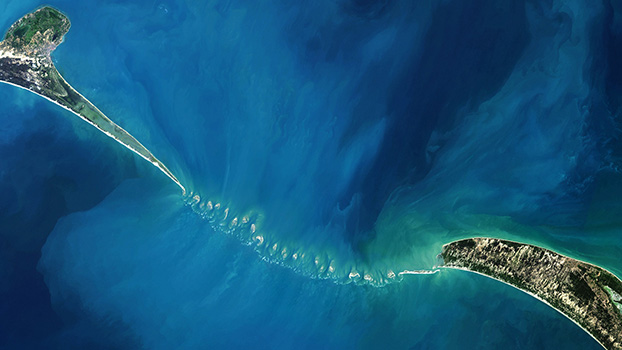
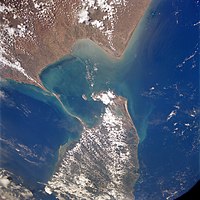
Fig. 47. ‘Rama’s Bridge’ between India (top) and Sri Lanka (bottom). (NASA)
Coincidentally, the name of the island forming the first link in Rama/Adam’s Bridge from the Indian mainland to Sri Lanka is “Rameswaram,” which resembles Ramses or Ramesses, and derives from the name of the deity Rama and iswar, meaning “god.”638 Indian myth thus states that the god Rama crossed a sea via “Rama’s Bridge,” while Judeo-Christian tradition posits that the god-king Ramesses attempted to pass through the Red Sea by virtue of “Moses’s Bridge,” so to speak. The Egyptian name Ramesses or Ramses comes from the god Ra and ms, meaning “born of (the god) Ra,” which is not much different from the moniker denoting “the god Rama.” This comparison is not indicated etymologically, and there certainly was a series of historical Ramesses, but this coincidence remains intriguing.
VISVIMATI
There is another Hindoo legend, recorded in the Rig Veda, and quoted by Viscount Amberly, from whose work we take it, to the effect that an Indian sage called Visvimati, having arrived at a river which he wished to cross, that holy man said to it: “Listen to the Bard who has come to you from afar with wagon and chariot. Sink down, become fordable, and reach not up to our chariot axles.” The river answers: “I will bow down to thee like a woman with full breast (suckling her child), as a maid to a man, will I throw myself open to thee.” This is accordingly done, and the sage passes through
BINDUMATI
Also an Indian legend which relates that a courtesan named Bindumati, turned back the streams of the river Ganges.
MOSES’S GREATEST MIRACLE
10 And when Pharaoh drew near, the children of Israel lifted their eyes, and behold, the Egyptians marched after them. So they were very afraid, and the children of Israel cried out to the Lord.
Most people will say Moses’s greatest miracle was the parting of the Red Sea with his magical magician rod. But nothing is said about the Super-Miracle of how he got two and a half to three million people with their loaded down carts and horses and cattle following … over to the other side in 20 minutes. Remember the Pharaoh’s army “drew near” in hot pursuit. And the Isreaites could see the Egyptian army marching towards them!!!
THE LINE OF ISREALITES WAS HUNDREDS OF MILES
The Septuagint of Exodus (LXX 13:18) says:
“children of Israel went up by five in a rank out of the land of Egypt,”
It has been clearly written in ancient texts that the exodus group marched five people wide across when crossing the parted sea. It is well known that someone calculated long ago that … if that number of people were marching in rank, at eight (more than 5) across, then when the first rank arrived at the Sinai Desert, then the other half of the people would still be in Egypt!
AND BAD GUYS DIE
27 And Moses stretched out his hand over the sea; and when the morning appeared, the sea returned to its full depth, while the Egyptians were fleeing into it. So the Lord overthrew the Egyptians in the midst of the sea. 28 Then the waters returned and covered the chariots, the horsemen, and all the army of Pharaoh that came into the sea after them. Not so much as one of them remained. 29
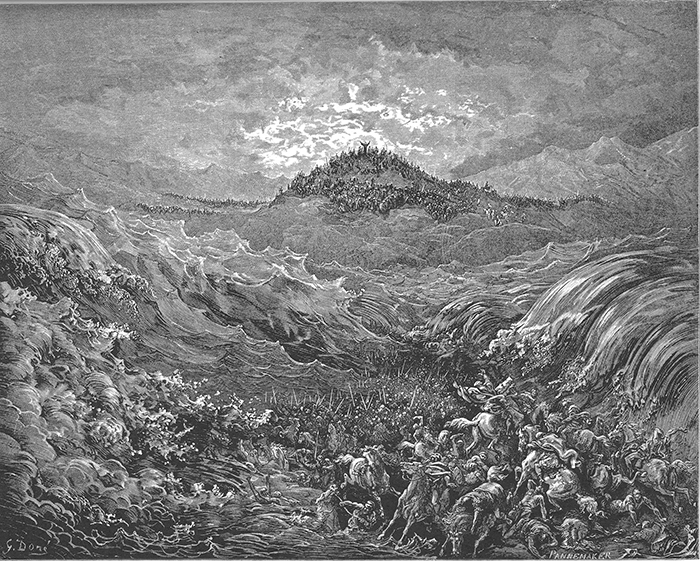
That Pharaoh and his army drowned in the Red Sea??? This fact not mentioned by any historian, and is simply impossible, especially when they have, as we have seen, noticed the fact of the Israelites being driven out of Egypt. Dr. Inman, speaking of this, says:
“We seek in vain amongst the Egyptian hieroglyphs for scenes which recall such cruelties as those we read of in the Hebrew records; and in the writings which have hitherto been translated, we find nothing resembling the wholesale destructions described and applauded by the Jewish historians, as perpetrated by their own people.”
That Pharaoh pursued a tribe of diseased slaves, whom he had driven out of his country, is very improbable. In the words of Dr. Knappert, we may conclude, by saying that:
“This story, which was not written until more than five hundred years after the exodus itself.”
SONG OF THE SEA
As concerns source of the verse writings of the Song of the Sea, Scholar Russell recounts that current scholarship tends to assign verses 1–18 and 20–21 to J (Jahova) and E (Elohim), respectively, while verse 19 has been ascribed to the P, a priestly redactor.
Scholar Oblath stretches the song’s composition date to around the 10th century, still centuries after the Moses time period. Other scholars contend it was written in a post-Exilic effort, after the middle of the sixth century and even into the late fourth century, BCE. The Isrealite exile to Babylon started in the 6th century BCE.
GULF OF AQABA
Alternative locations for the Mosaic desert account include east of the Gulf of Aqaba, which brings up many new problems. Despite the dearth of evidence and presence of clearly mythical motifs, Christian blind-believer videos, books and websites go so far as to claim that in the “ancient ‘Yam Suph’ (modern day ‘Gulf of Aqaba’ aka the ‘Red Sea’)” there exist “hundreds of Egyptian chariots…strewn across the sea floor.” It is further contended that robotic submarine cameras have revealed “an underwater battlefield where the coral encrusted remains of Pharaoh’s army still litter the ocean floor like an ancient chariot junkyard.”
This theory also contends that, along with these chariot parts, human and horse bones likewise have been found in the Gulf of Aqaba. Regarding one of these purported discoveries, a supposed chariot wheel from the Gulf, we read:
The hub had the remains of eight spokes radiating outward and was examined by Nassif Mohammed Hassan, director of Antiquities in Cairo. Hassan declared it to be from the 18th Dynasty of ancient Egypt, explaining the eight-spoked wheel was used only during that dynasty around 1400 B.C.
But note: No one can produce this wheel or it’s the precise whereabouts of that “eight-spoked wheel” today, though Hassan is on videotape stating his conclusion regarding authenticity.
The supposed underwater “chariot wheels” in question are not accepted by mainstream scientists as existing in the Gulf of Aqaba. Moreover, Prof. Yigal Yadin writes that “the Egyptian chariot in the first half of the XVIIIth Dynasty is exactly like the Canaanite chariot.” The 18th Dynasty is dated to around 1550 to 1292 BCE, the era in which Moses was said to have lived. Hence, this wheel, if indeed it is such, could be from a Canaanite chariot, not from the Exodus event at all.
As concerns such claims, let us quote archaeologist Dever, who goes out of his way to be “theologically responsible and sensitive” in order to salvage something “historical” from the Bible:
“In fact, no one had ever found any archaeological evidence for the Exodus from Egypt.” Archaeologist Dever
HISTORIANS
Dr. Inman, speaking of this, says: “We seek in vain amongst the Egyptian hieroglyphs for scenes which recall such cruelties as those we read of in the Hebrew records; and in the writings which have hitherto been translated, we find nothing resembling the wholesale destructions described and applauded by the Jewish historians, as perpetrated by their own people.
Dr. Knappert, concludes, by saying: “This story, which was not written until more than five hundred years after the exodus itself, can lay no claim to be considered historical.”